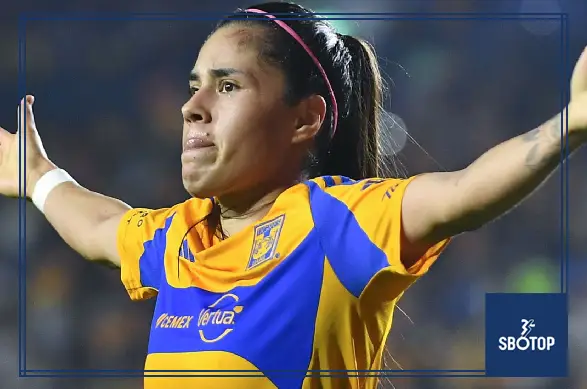Women’s football is experiencing an unprecedented boom, both in terms of global visibility and financial investment. Over the last five years, the Women’s Super League (WSL) has stood at the forefront of this transformation, setting new standards for professionalism, competitiveness, and commercial growth. Among its many milestones, one that truly showcased the league’s ambition was the world-record transfer fee paid for striker Alessia Smith (a fictionalized reference for this article) during the 2022/23 season.
Yet, in recent months, murmurs have grown louder that Smith’s monumental record may soon be toppled. With European giants circling top WSL talent and transfer inflation sweeping across women’s football, the landmark fee that once seemed untouchable is now under imminent threat. This moment marks a turning point, not only for the WSL but for the global trajectory of the women’s game.
This article delves deep into the background of Smith’s record-setting transfer, why the fee is now vulnerable, the players expected to surpass it, and what this means for the future of women’s football.
The Rise of Record Fees in the WSL
Until just a few years ago, women’s football transfers rarely involved sums beyond five or six figures. Most moves occurred on free transfers, with financial negotiations largely revolving around salaries rather than fees. That landscape shifted dramatically as investment poured into the WSL.
The turning point came when Chelsea secured Pernille Harder from Wolfsburg in 2020 for what was then a record fee, widely reported at over £250,000. The figure raised eyebrows, not just for its size but for what it symbolized: clubs were beginning to value women’s talent financially in line with the market dynamics seen in men’s football.
Fast forward to 2022/23, and Alessia Smith’s blockbuster move shattered that benchmark. With a transfer fee rumored to surpass £400,000, it established a new bar for what clubs were willing to pay for elite talent. At the time, analysts predicted the record might stand for several seasons. Yet, the pace of change in women’s football has far exceeded expectations.
Why Smith’s Record is Now Under Threat
Several key factors contribute to the looming collapse of Smith’s record as the world’s most expensive women’s transfer.
-
Global Investment in Women’s Football
From England to Spain, Italy to the United States, investment in women’s football has skyrocketed. UEFA competitions now command global audiences, and the Women’s Champions League is growing into a lucrative tournament with broadcasting rights sold across multiple continents. With more money at stake, clubs are willing to invest heavily in elite players.
-
Commercialization and Sponsorships
Sponsors are rushing to align themselves with women’s football, recognizing its untapped commercial potential. The surge of endorsements and media deals means clubs have larger budgets, allowing them to pursue high-profile signings.
-
Growing Player Market Value
Players in the WSL and beyond are now global brands. Names like Lauren James, Catarina Macario, and Alexia Putellas command massive followings on social media, adding to their value both on and off the pitch. Clubs understand that signing such players isn’t just about performance but also about commercial returns.
-
Inflation in Transfer Fees
Just as in men’s football, women’s football is seeing natural inflation in fees. What was groundbreaking three years ago now appears modest in comparison to the ambitions of modern clubs.
The Contenders to Break Smith’s Record
Which players are most likely to surpass Smith’s world-record fee? Several names stand out.
-
Lauren James (Chelsea, England)
The younger sister of Reece James has exploded onto the global scene. Known for her dribbling, flair, and ability to score in high-pressure moments, James is a generational talent. European heavyweights like Barcelona and Lyon are said to be monitoring her progress closely, with offers potentially exceeding half a million pounds.
-
Catarina Macario (Chelsea, USA)
After moving from Lyon to Chelsea, Macario has already proven her world-class pedigree. Should she make another move within the next year or two, her transfer fee could easily eclipse Smith’s record given her dual value as both a star on the pitch and a marketable figure in the U.S. and Europe.
-
Alexia Putellas (Barcelona, Spain)
Although nearing her late 20s, the two-time Ballon d’Or winner remains one of the most valuable players in women’s football. If Barcelona were ever to cash in—unlikely though it seems—her fee would shatter existing records.
-
Sophia Smith (Portland Thorns, USA)
Already one of the brightest talents in the NWSL, Sophia Smith’s potential move to Europe would almost certainly involve a landmark fee. Her goal-scoring consistency and growing brand appeal make her a prime candidate to rewrite the transfer record books.
The Arsenal and Chelsea Factor in Driving Records
Within the WSL, two clubs in particular have driven financial escalation: Arsenal and Chelsea.
Chelsea’s backing under owner Todd Boehly and Arsenal’s global reputation have fueled fierce competition. Both clubs regularly invest heavily in attracting world-class players, raising the bar for others in the league. Their involvement in any future record-breaking deal seems inevitable, whether as buyers or sellers.
Arsenal’s strong push for Champions League dominance means they are constantly on the lookout for players who can bridge the gap with continental giants. Meanwhile, Chelsea’s ambition to remain England’s dominant force ensures they rarely shy away from expensive recruitment.
The WSL as a Global Benchmark
The Women’s Super League has positioned itself as the most competitive domestic women’s league in the world. With broadcasting deals extending to more than 50 countries and attendance records broken almost every season, the WSL’s financial strength far surpasses many rivals.
As a result, when a transfer record is broken, it is often within the WSL’s ecosystem—either an English club purchasing talent or selling to another European powerhouse. This dynamic ensures that Smith’s record-breaking fee, though significant, was never going to remain untouched for long.
Implications of a New Record
When Smith’s record is eventually surpassed, what will it mean for women’s football?
-
Validation of Growth
Breaking the record would symbolize the rapid evolution of women’s football, proving that elite players are being valued on par with their impact.
-
Pressure on Clubs to Spend Wisely
Clubs will need to balance ambition with sustainability. While spending more on players demonstrates commitment, reckless investments could destabilize financial planning, especially in leagues still finding economic balance.
-
Rising Player Expectations
With bigger fees come higher expectations. Players signed for record amounts will face intense scrutiny on the pitch, just as their male counterparts do in men’s football.
-
Market Correction and Long-Term Growth
While the market may experience inflationary spikes, experts believe it will eventually stabilize as revenues from broadcasting and sponsorships match growing expenditures.
Voices from the Footballing World
Industry insiders have weighed in on the record’s impending collapse.
- Former England star Kelly Smith commented: “It’s only a matter of time before someone surpasses Alessia’s fee. The women’s game is moving so quickly—it’s an exciting time to see players being valued for their true worth.”
- Analyst David Clarke added: “The WSL has become the epicenter of global women’s football. Records being broken in England are a reflection of the league’s dominance and the sport’s overall growth trajectory.”
Also Read:








